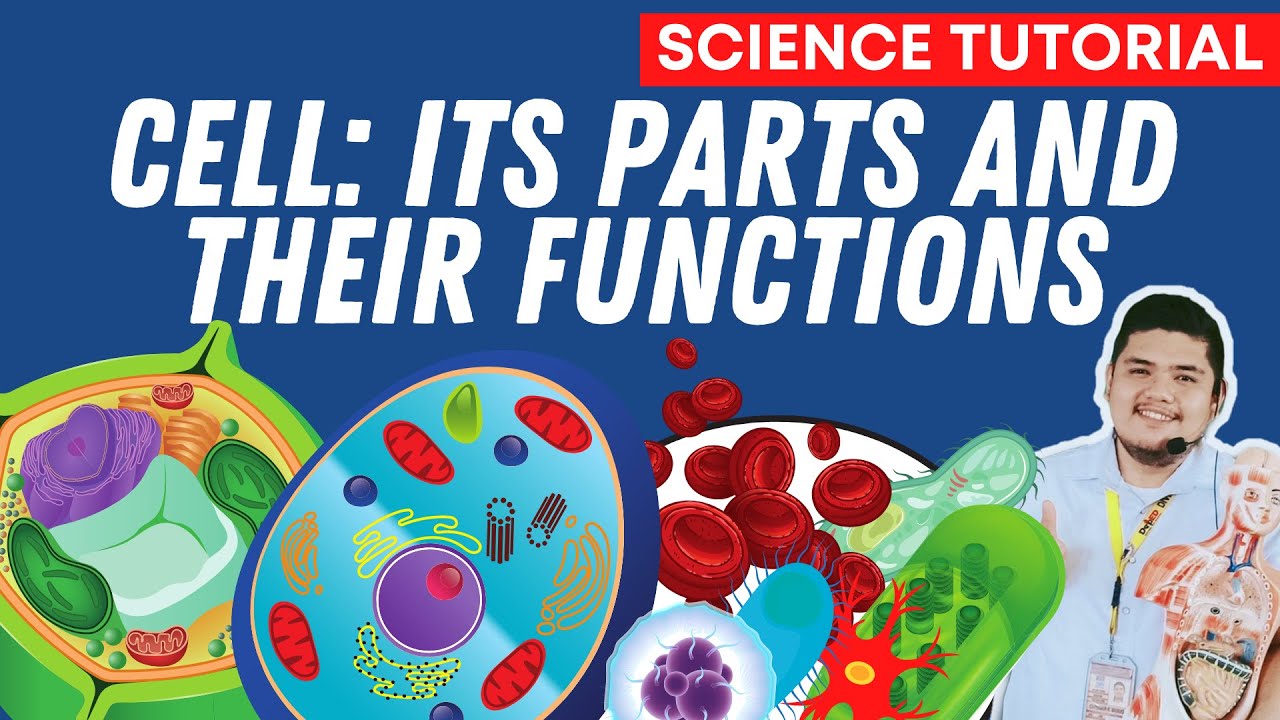SEL 1 (Komponen Kimia Sel)
Summary
TLDRThis video script delves into the fundamental unit of life, the cell. It explores the discovery of cells, the theory of cell types, and the chemical components within cells. The script distinguishes between prokaryotic and eukaryotic cells, highlighting their differences in structure and function. It also touches on the importance of carbohydrates, lipids, proteins, and nucleic acids in cellular processes, emphasizing the cell's role in metabolism, reproduction, and maintaining life's continuity.
Takeaways
- 🌟 Cells are the smallest units of life, being either unicellular or multicellular, and are the basic building blocks of all living organisms.
- 🔬 The chemical components and activities within a cell can only be observed under light or electron microscopes.
- 📚 The cell theory states that cells are the smallest units of life, capable of reproduction, growth, energy utilization, and adaptation to the environment.
- 👨🔬 Robert Hooke was the first to discover cells by observing dead cells in plants, while Robert Brown identified the importance of the nucleus within the cell.
- 🧬 Protoplasm, a term introduced by Johannes Purkinje, refers to the combination of the cell nucleus and the cell fluid, which is essential for metabolism within the cell.
- 🌱 The history of cell discovery includes significant contributions from Vertu Cerdin, who emphasized the importance of cell fluid, and Rudolf Virchow, who proposed that new cells arise from the division of existing cells.
- 🔍 There are two main types of cells: prokaryotic and eukaryotic, with eukaryotic cells having a nucleus and organelles, and prokaryotic cells lacking a nucleus but containing genetic material.
- 🌿 Eukaryotic cells are found in plants and animals, while prokaryotic cells are found in unicellular organisms like bacteria.
- 🧬 The genetic material in cells, DNA, plays a crucial role in controlling cell activities and carrying genetic information.
- 🍰 Carbohydrates in cells serve as an energy source and structural components, with different types such as monosaccharides, disaccharides, and polysaccharides.
- 🍗 Lipids, including triglycerides, are part of the cell membrane and have various functions such as energy storage and structural integrity.
- 💪 Proteins are complex chemical compounds that make up about 50% of the cell's dry weight, playing roles in enzymatic activity, mechanical support, and movement.
Q & A
What is the basic unit of life according to the script?
-The basic unit of life is the cell, which is the smallest component of every living organism.
What are the two types of cells mentioned in the script?
-The two types of cells mentioned are prokaryotic cells and eukaryotic cells.
What is the function of the cell membrane?
-The cell membrane serves as a boundary separating the cell from its external environment.
What is the role of cytoplasm in a cell?
-Cytoplasm is a colloid-like gel that contains the cell's organelles and is the main component for chemical metabolism within the cell.
What are the main differences between prokaryotic and eukaryotic cells?
-Prokaryotic cells lack a nucleus with a nuclear envelope and have ribosomes in the cytoplasm, while eukaryotic cells have a nucleus with a nuclear envelope, and their ribosomes are found in the cytoplasm and endoplasmic reticulum.
What is the significance of the nucleus in a cell?
-The nucleus is important as it contains the genetic material of the cell and serves as the control center for cellular activities.
What is the role of carbohydrates in a cell?
-Carbohydrates serve as a source of energy for the cell through processes like cellular respiration and also act as structural components for organelles and parts of the cell.
What are the main components of the protoplasm mentioned in the script?
-The main components of protoplasm are organic compounds such as carbohydrates, lipids, and nucleic acids.
What is the difference between transcription and translation in the context of protein synthesis?
-Transcription is the process of creating a messenger RNA (mRNA) from a DNA template, while translation is the process by which the mRNA is used to synthesize proteins with the help of ribosomes.
What are nucleic acids and what is their function in a cell?
-Nucleic acids are the genetic material of the cell, responsible for controlling cellular activities and carrying genetic information.
What are the historical contributions of Robert Hooke, Robert Brown, and Rudolf Virchow to cell theory?
-Robert Hooke was the first to observe cells, Robert Brown identified the importance of the nucleus within the cell, and Rudolf Virchow contributed the concept that all cells come from pre-existing cells, which is the basis for the cell theory.
Outlines

This section is available to paid users only. Please upgrade to access this part.
Upgrade NowMindmap

This section is available to paid users only. Please upgrade to access this part.
Upgrade NowKeywords

This section is available to paid users only. Please upgrade to access this part.
Upgrade NowHighlights

This section is available to paid users only. Please upgrade to access this part.
Upgrade NowTranscripts

This section is available to paid users only. Please upgrade to access this part.
Upgrade NowBrowse More Related Video

Secret lives of cells – Life sciences

PARTS AND FUNCTIONS OF A CELL SCIENCE 7 QUARTER 2 MODULE 3

Class-6, Biology, ICSE, Cell- Structure & Function, full chapter

Cell Theory and Organelles

Fundamental Unit of Life One Shot in 20 Mins | NCERT Class 9th Science Chapter-5 | Vedantu Class 9

Cells (Parts and Functions), Plant and Animal Cell | Grade 7 Science DepEd MELC Quarter 2 Module 4
5.0 / 5 (0 votes)